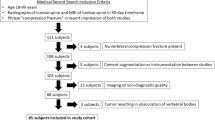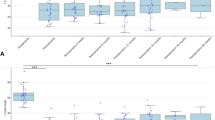Abstract
Purpose
To assess factors, including RAPT score, predictive of non-home discharges following adult spinal deformity (ASD) operations.
Methods
Adults who underwent thoracolumbar instrumented fusions to the pelvis for ASD (1/2019–1/2020) were reviewed. Patient demographics, RAPT metrics, hospital length of stay (LOS), operative details, and complications were compared between patients discharged home and non-home. Univariate and multivariate analyses were performed using logistic regression to determine the relative risk of non-home discharge. Area Under the Receiver Operating Characteristic curve (AUROC) for RAPT score and non-home discharge was also determined.
Results
Ninety-nine patients (average age 68 ± 9 years; female-64; average RAPT 8.6 ± 2.2) were analyzed. Operations had the following characteristics: average # levels fused 11 ± 3, revisions 54%, anterior–posterior 70%, 3-column osteotomies 23%. Average LOS was 8.5 ± 3.6 days. The majority of patients (75.8%) had non-home discharges. Non-home discharges had significantly lower RAPT scores (8.3 vs. 9.6; p = 0.02), more advanced age (70 vs. 63 years; p = 0.01), and higher Charlson Comorbidity Index (CCI) scores (3.6 vs. 2.5; p < 0.01) compared to home discharges. On univariate analysis, factors significantly associated with non-home discharge were older age [relative risk (RR) 1.09, p < 0.01], higher CCI (RR 1.73, p = 0.01), total # levels fused (RR 1.24, p = 0.04), and lower RAPT scores (RR 0.71, p = 0.01). RAPT score < 8 was most predictive of non-home discharge (RR 4.87, p = 0.04). An AUROC relating RAPT scores and non-home discharge was 0.7.
Conclusions
Non-home discharges after ASD operations are common. Of the four factors associated with non-home discharges (elderly age, higher CCI, total number of levels fused, RAPT score), a RAPT score < 8 was most predictive. The RAPT score holds promising utility for pre-operative patient counseling and discharge planning for adults undergoing operations for spinal deformity.


Similar content being viewed by others
References
Passias PG, Poorman GW, Bortz CA et al (2018) Predictors of adverse discharge disposition in adult spinal deformity and associated costs. Spine J 18(10):1845–1852
Theologis AA, Lau D, Dalle-Ore C et al (2021) Costs and utility of post-discharge acute inpatient rehabilitation following adult spinal deformity surgery. Spine Deform 9(3):817–822
Oldmeadow LB, McBurney H, Robertson VJ et al (2004) Targeted postoperative care improves discharge outcome after hip or knee arthroplasty. Arch Phys Med Rehabil 85(9):1424–1427
Dauty M, Schmitt X, Menu P et al (2012) Using the risk assessment and predictor tool (RAPT) for patients after total knee replacement surgery. Ann Phys Rehabil Med 55(1):4–15
Coudeyre E, Eschalier B, Descamps S et al (2014) Transcultural validation of the risk assessment and predictor tool (RAPT) to predict discharge outcomes after total hip replacement. Ann Phys Rehabil Med 57(3):169–184
Dibra FF, Parvataneni HK, Gray CF et al (2020) The risk assessment and prediction tool accurately predicts discharge destination after revision hip and knee arthroplasty. J Arthroplasty 35(10):2972–2976
Dibra FF, Silverberg AJ, Vasilopoulos T et al (2019) Arthroplasty care redesign impacts the predictive accuracy of the risk assessment and prediction tool. J Arthroplasty 34(11):2549–2554
Slover J, Mullaly K, Karia R et al (2017) The use of the risk assessment and prediction tool in surgical patients in a bundled payment program. Int J Surg 38:119–122
Hansen VJ, Gromov K, Lebrun LM et al (2015) Does the risk assessment and prediction tool predict discharge disposition after joint replacement? Clin Orthop Relat Res 473(2):597–601
Alshahwani AA, Dungey M, Lillie C, et al. (2021) Predictive value of the risk assessment and prediction tool (RAPT) score for primary hip and knee arthroplasty patients: a single-center study. Cureus 13(3)
Klineberg EO, Passias PG, Poorman GW et al (2020) Classifying complications: assessing adult spinal deformity 2-year surgical outcomes. Global Spine J 10(7):896–907
Piazza M, Sharma N, Osiemo B et al (2019) Initial assessment of the risk assessment and prediction tool in a heterogeneous neurosurgical patient population. Neurosurgery 85(1):50–57
Berger I, Piazza M, Sharma N et al (2019) Evaluation of the risk assessment and prediction tool for postoperative disposition needs after cervical Spine surgery. Neurosurgery 85(5):E902–E909
Glauser G, Piazza M, Berger I et al (2020) The risk assessment and prediction tool (RAPT) for discharge planning in a posterior lumbar fusion population. Neurosurgery 86(2):E140–E146
Cohen E, Reid DBC, Quinn M et al (2021) Modifying the RAPT score to reflect discharge destination in current practice. Arthroplasty Today 7:17–21
Funding
No funding was obtained for the submitted work.
Author information
Authors and Affiliations
Contributions
Made substantial contributions to the conception or design of the work; or the acquisition, analysis, or interpretation of data; or the creation of new software used in the work: DC, SG, SB, TB, SB. Drafted the work or revised it critically for important intellectual content: DC, SG, SB, TB, SB. Approved the version to be published: DC, SG, SB, TB, SB. Agree to be accountable for all aspects of the work in ensuring that questions related to the accuracy or integrity of any part of the work are appropriately investigated and resolved: DC, SG, SB, TB, SB, CA, VD, AC, AT.
Corresponding author
Ethics declarations
Conflict of interest
None relevant to the submitted work.
Informed consent
Waiver of consent/authorization approved by IRB.
IRB approval
Yes.
Additional information
Publisher's Note
Springer Nature remains neutral with regard to jurisdictional claims in published maps and institutional affiliations.
Rights and permissions
About this article
Cite this article
Cummins, D., Georgiou, S., Burch, S. et al. RAPT score and preoperative factors to predict discharge location following adult spinal deformity surgery. Spine Deform 10, 639–646 (2022). https://doi.org/10.1007/s43390-021-00439-8
Received:
Accepted:
Published:
Issue Date:
DOI: https://doi.org/10.1007/s43390-021-00439-8




